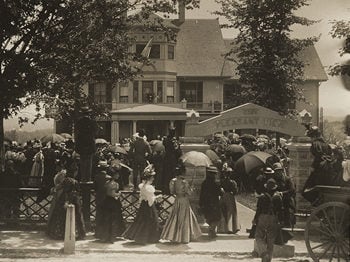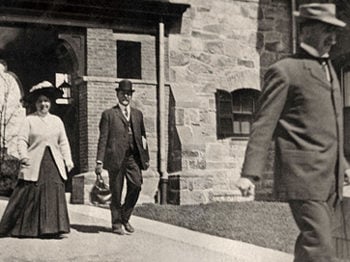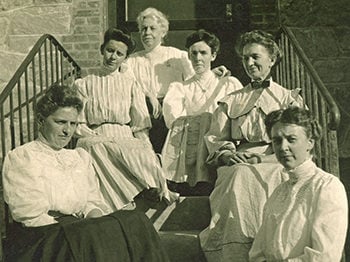This is the third in a three-part series about the growth of the Christian Science church in Concord, New Hampshire.
July 17, 1904, was a momentous day for Christian Scientists and for the city of Concord, New Hampshire. For almost seven years, Mary Baker Eddy had shepherded the Christian Science church in her adopted hometown. She’d written inspiring letters and messages to the congregation; sent flowers from Pleasant View, her home on the outskirts of the city; and started and contributed liberally to a Building Fund. During these years, Christian Scientists from across the nation and around the world rallied behind her, contributing to the fledgling church. Finally, in the summer of 1904, the much-anticipated First Church of Christ, Scientist, Concord, was completed.
“This church, born in my nativity, may it build upon the rock of ages against which the waves and winds beat in vain,” Mrs. Eddy wrote in a message that was delivered on Dedication Day. “Unity is spiritual cooperation, heart to heart, the bond of blessedness such as my beloved Christian Scientists all over the field, and the dear Sunday School children, have demonstrated in gifts to me of about eighty thousand dollars, to be applied to building, embellishing, and furnishing our church edifice in Concord, N. H.”1
That summer day in 1904 celebrated a gift – a gift from one woman and the entire Christian Science field. Today, this gift continues to stand as a testament to “unity” and “spiritual cooperation,” blessing its members, the city of Concord, visitors, and the wider field.
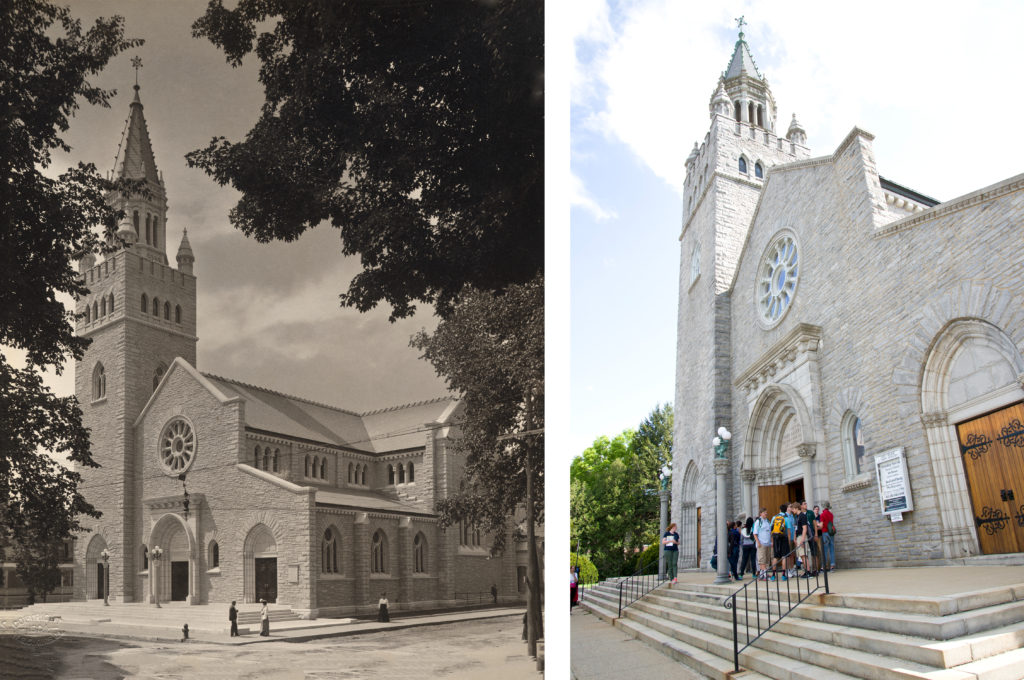
It all began with an idea.
“When the good effects of Christian Science are seen and sufficiently understood in Concord to be appreciated,” Mrs. Eddy wrote to a local newspaper in 1897, “then, Deo volente, a beautiful stone church will be erected on one of the finest locations in this city.”2 A few months later, she formed a Building Trust and seeded it with $100,000 of her own funds.3 It would be a number of years before work began on the granite structure she envisioned, however, so a house in the center of town was purchased and repurposed to serve as the church’s temporary home in the interim.4
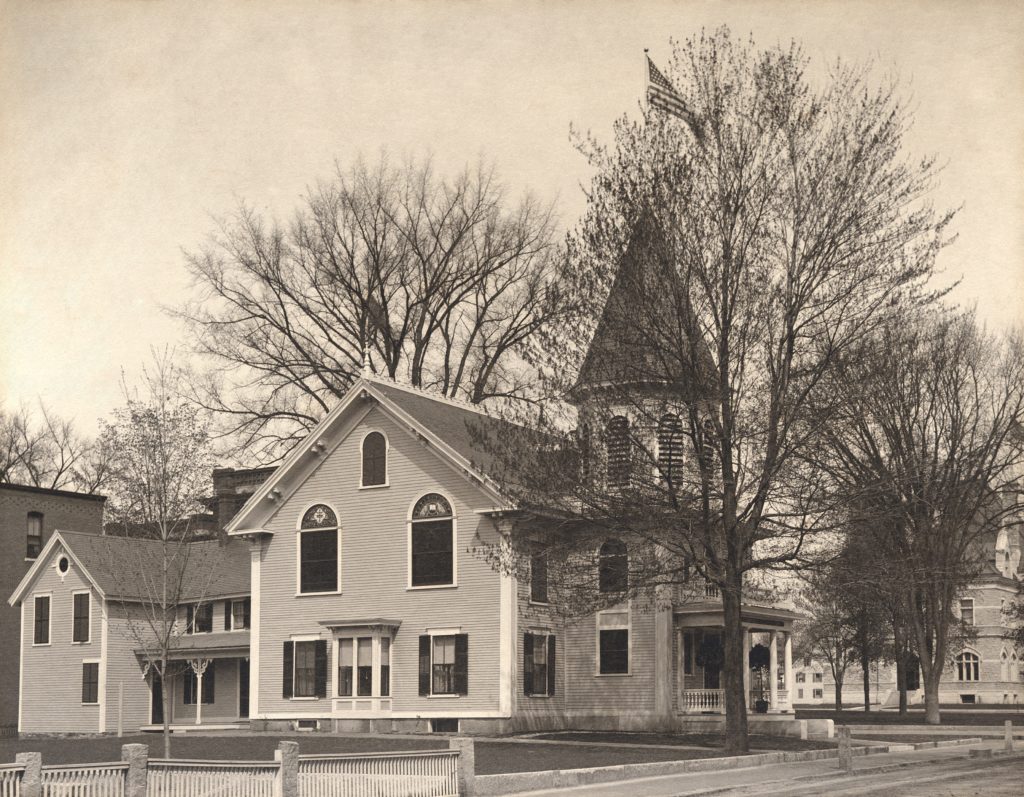
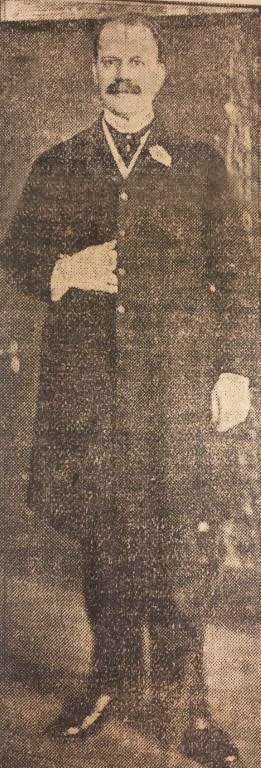
“This setting aside by Mrs. Eddy of $100,000 for a church home was consistent with her entire religious life,” wrote Irving Tomlinson, who had come to Concord in 1899 at Mrs. Eddy’s invitation to help shepherd the growing congregation. “Herein was the faith that God would prosper her infant church; herein was the confidence that her followers would be worthy of such munificence; herein was charity that never faileth—for at this time Mrs. Eddy gave to her home city for their temple beautiful about one half of all her available funds. With so much love as she bestowed the gift with no less wisdom did she guard its safety and perpetuity.”5
For five and a half years, local Christian Scientists and Concord visitors enjoyed attending church services at Christian Science Hall. Mrs. Eddy visited on occasion as well—she delivered two sermons and taught her final class in the Hall—but these temporary quarters were only a steppingstone. By 1903, the time was ripe for a permanent church structure.6
That summer, when plans for a new edifice were announced and demolition of Christian Science Hall was set to begin, the local press was quick to report on the “fraternal good will from sister churches in Concord.” The local Episcopal church offered its parish hall as a temporary place of worship to Christian Scientists. The Unitarian church offered their premises as well, and for thirteen months the Christian Science congregants gratefully held services in the latter.7 New Hampshire’s State Treasurer heartily approved, calling this plan an expression of “Christian courtesy” and the “ideal of Christian brotherhood.”8
On July 16, 1903, the cornerstone was laid.9
But the project got off to a bumpy start. It wasn’t long after the laying of the cornerstone that Mrs. Eddy and the Trustees of the Building Fund saw the writing on the wall: The cost of construction was going to far exceed the amount she had so generously donated.10 Stuck in a bind, what was the church to do?
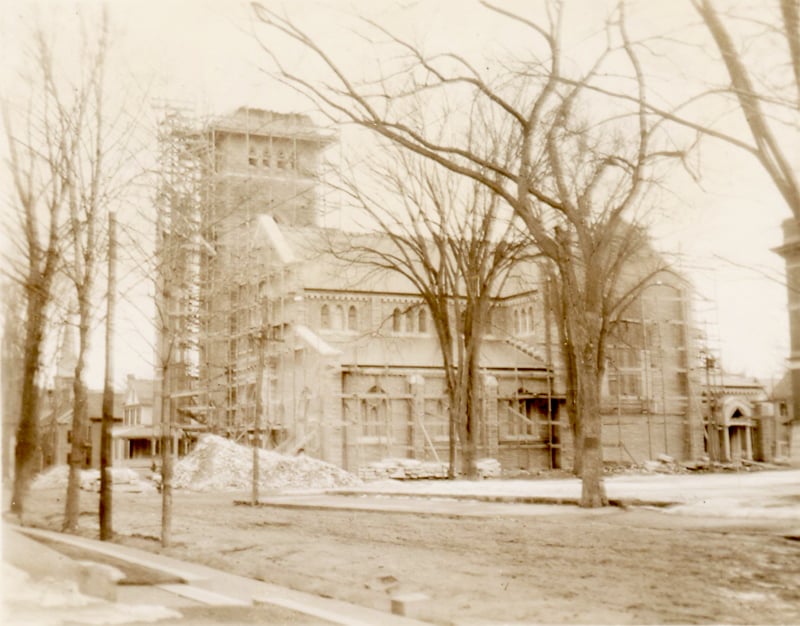
Thankfully, it wasn’t long before financial gifts began to pour in like a floodtide. Donations came from Christian Scientists all over the country, and even from other parts of the world. They came from congregations large and small, and from children in Sunday Schools. Some gifts numbered in the thousands of dollars; others were as small as a meek one-dollar bill. Every cent was appreciated; no gift went unnoticed. The “princely generosity of Christian Scientists” didn’t go unnoticed by the press.11
Six branch churches in Chicago banded together to donate $10,000 to pay for the pews.12 A church in New York and The Mother Church in Boston both funded that same amount to pay for stained-glass windows (which Mrs. Eddy described as “exceptional specimens of the highest art”13) and the organ.14 The Christian Science church in New London, Connecticut, donated a beautiful cabinet, while a church in Los Angeles contributed to the chancel, the platform space used by the Readers and soloist.15
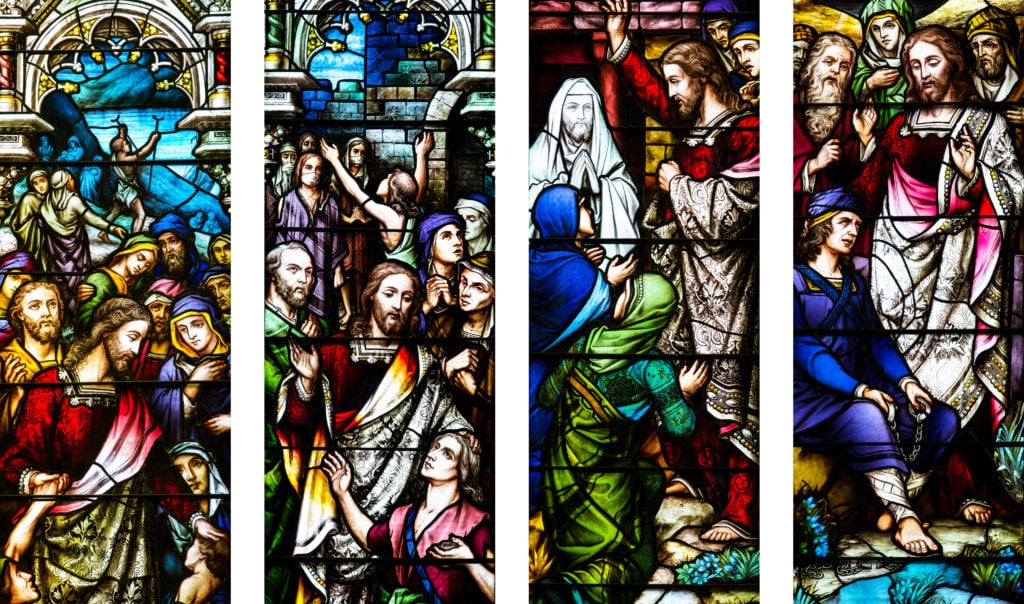
A couple paid for the flooring of the church, while individuals and Sunday School children furnished a room in the church for Mrs. Eddy’s use.16 An anonymous donor underwrote the edifice’s bronze doors; another supplied oriental rugs.17 The chimes were a gift, as were the furnishings in the Reading Room.18 A Christian Science Students’ Association in Colorado sent $10 a month to pay for flowers for the Sunday services, while churches in North and South Carolina sent a specially-made flower arrangement in addition to a monetary gift.19 In total, about $80,000 was generously donated by Christian Scientists and church congregations across the nation and abroad.20
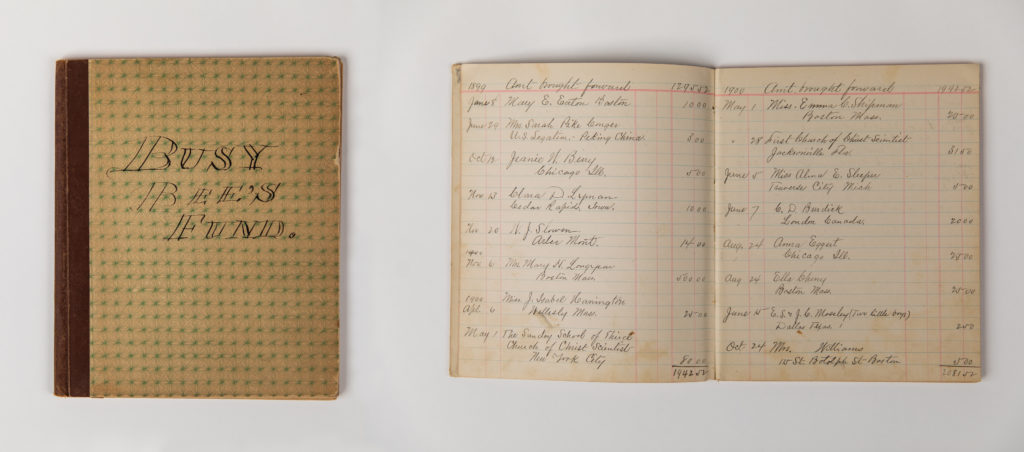
“At this late day it has dawned upon us what the new church at Concord stands for,” one couple wrote to the treasurer of the building fund shortly before Dedication Day. “As The Mother Church stands in our thought for the Fatherhood and Motherhood of God, so does the church at Concord stand for the Brotherhood of man. This explains to us the desire to help demonstrated by so many of the churches. . . . How divinely natural that our love for God be first shown by love for the brother.”21
Mrs. Eddy, who passed by the building site on her daily carriage ride, was keenly interested in the proceedings.
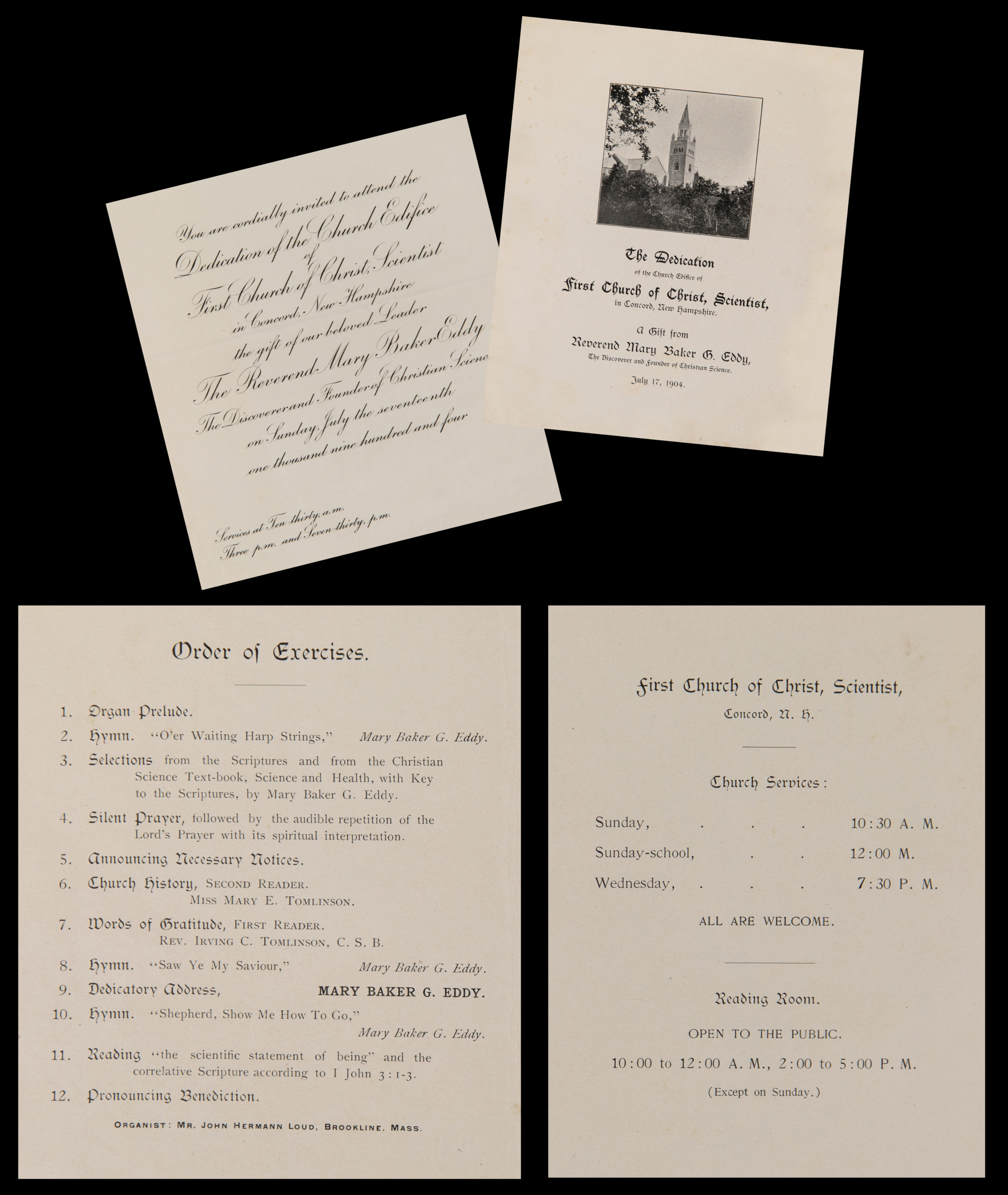
“The new church gives me a sense of peace and harmony,” she remarked to Irving Tomlinson. “When I come near it I feel its unity and spiritual harmony. It is like leaving a hot room and coming into a cool refreshing one. . . . The architect has tried to make the church as perfect as possible. The stone turnings are far handsomer than I had expected.”22
Others were also impressed by the structure. “The edifice to be occupied by First Church of Christ, Scientist, of Concord, is without doubt the most beautiful structure of the kind in this state,” enthused the Concord Monitor.23
Concord’s Mayor personally thanked Mrs. Eddy for her generosity and benevolence, adding, “You have already done much to make us your debtors but in this later benefaction you have surely extended our indebtedness to generations to come.”24
On July 16, 1904, exactly one year after construction began, the building was completed. First Church of Christ, Scientist, Concord, was dedicated the following day.25
What a sight it must have been, as Christian Scientists gathered from all over the country to celebrate! Looking around the lovely edifice, graced with so many symbols of benevolence and charity, it would have been impossible not to recognize their source: gratitude for God and to Mrs. Eddy for her discovery of the Science that had brought them all together.
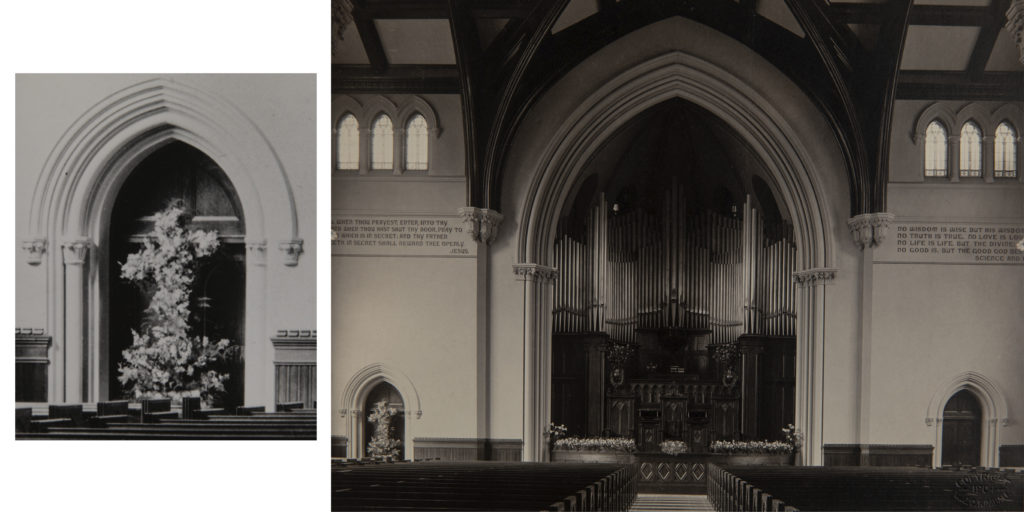
In her remarks that day, Second Reader Mary Tomlinson spoke of these manifold blessings: “The fact that Concord is the home of the Discoverer of Christian Science has made this church the recipient of rich and beautiful gifts, which are but natural expressions of gratitude to God and love to our Leader for the great good received through her ministry.”26
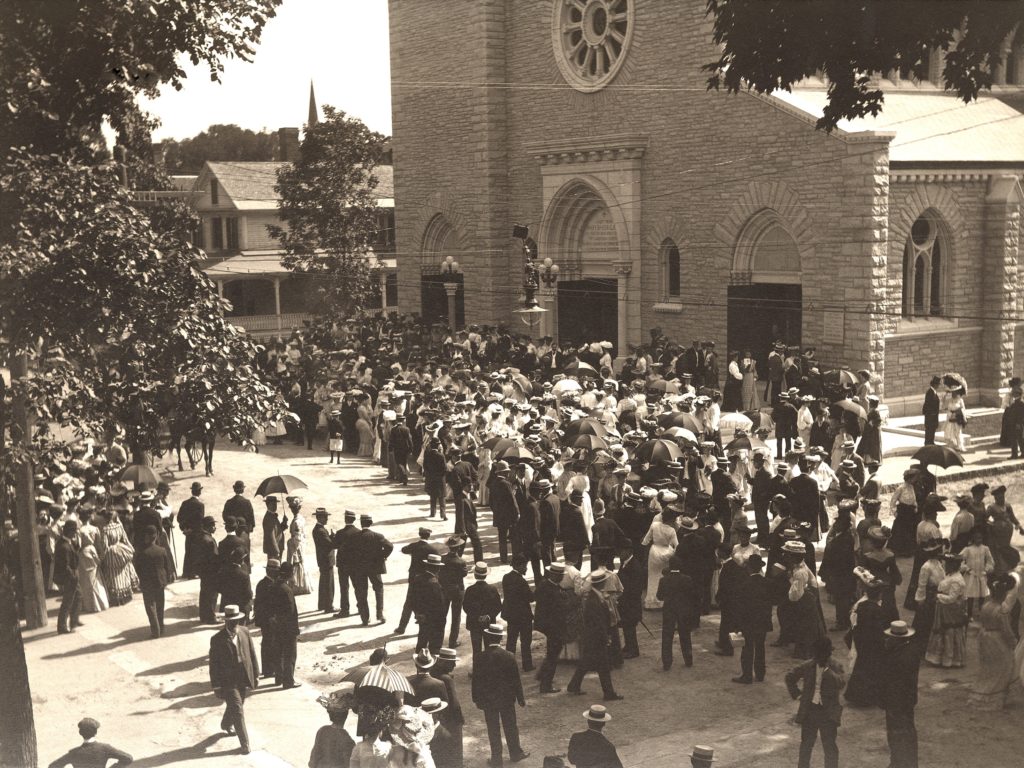
Mary’s brother Irving, who was serving as First Reader in Concord, also spoke that day to the estimated four to five thousand eager listeners. Many were prominent Christian Scientists working in the field—practitioners, lecturers and teachers, readers and other church officers, editors of the periodicals—others included lawyers, journalists, government officials, public officers, and ministers.27
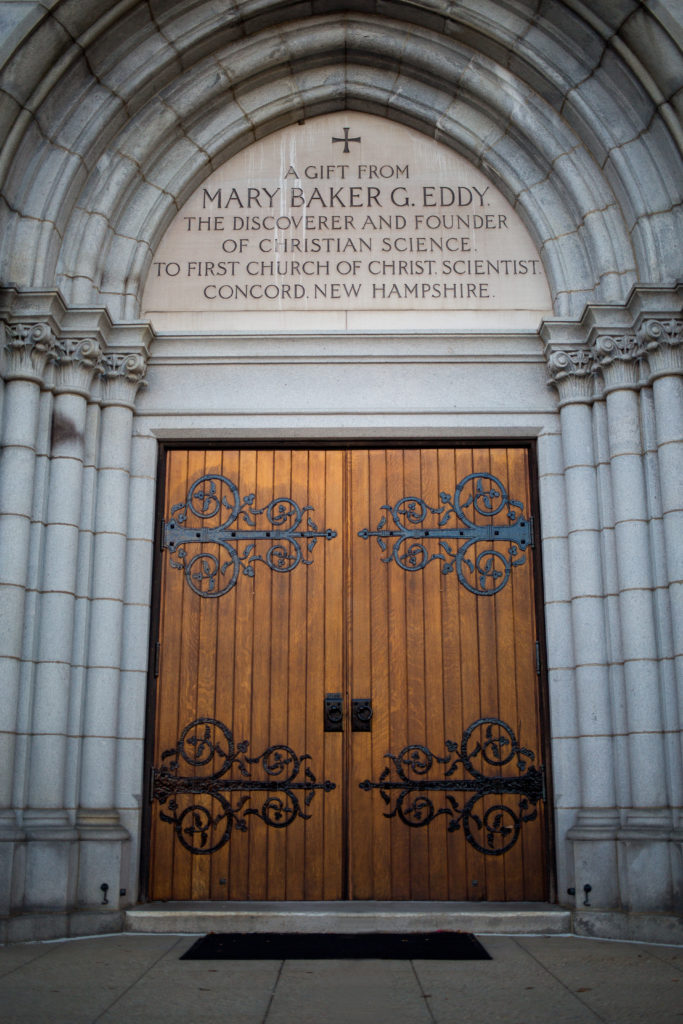
“The long looked for day dawned fair and peaceful,” Tomlinson later recorded.28 In his address to the congregation, he noted, “Our hearts, on this glad day, are vocal with psalms of gratitude to the heavenly Father for His manifold benefits. And now we turn in joy and gratitude to her whose steadfast loyalty to God has made her our beloved Leader all the toilsome way. All this, and far more, is to us the meaning of these stones. They shall be ‘a memorial unto the children of Israel forever.’ We all know that the visible edifice is but the symbol of the invisible idea which it enshrines.”29
The “crowning feature of the programme,” reported the Concord Monitor, was none other than Mrs. Eddy’s own dedicatory address, which was read by Bicknell Young, a member of the Christian Science Board of Lectureship.30
“Mrs. Eddy’s illuminating and suggestive sentences sank deeply into the mind of the vast congregation,” the Monitor observed, “who listened with rapt attention as her thought was developed in chaste and striking phrase. Many were moved to tears by her language and all received a strong spiritual uplift from her words of mighty, yet tender, import.”31
Though Mrs. Eddy did not attend any of the four services held that day,32 she did go on her customary daily carriage ride, driving past the church and the crowd awaiting the afternoon service. As the church chimed a welcome, she bowed and saluted from the window to the visiting guests and other bystanders who lined the sidewalks.
“Mrs. Eddy surveyed the throng smilingly,” noted a local journalist.33
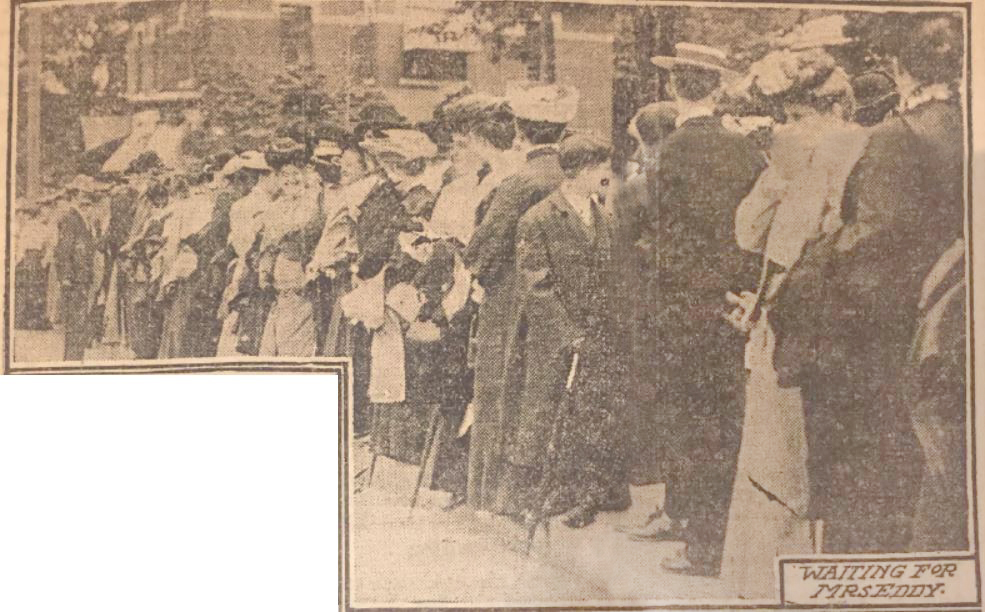
Concord was abuzz on Dedication Day, its hospitality on full display. The Unitarian church and the Memorial Parish Hall of the Episcopal church threw their doors open to help accommodate the visitors. Private houses, clubs, the Concord City Building, the Capital Fire Insurance Company’s offices (which offered guests the use of their space as cloak rooms), the First National Bank, the Concord Monitor’s counting room, and local retail stores also welcomed the throngs. Concord’s City Marshal opened the town’s police precinct, which displayed a sign above its door that read, “Christian Scientists, Welcome.” Lemonade and cookies were served at William Thompson’s shoe store, a shop which proved of special interest to those visitors who knew of Mrs. Eddy’s connection to it through her funding of shoes for needy children.34
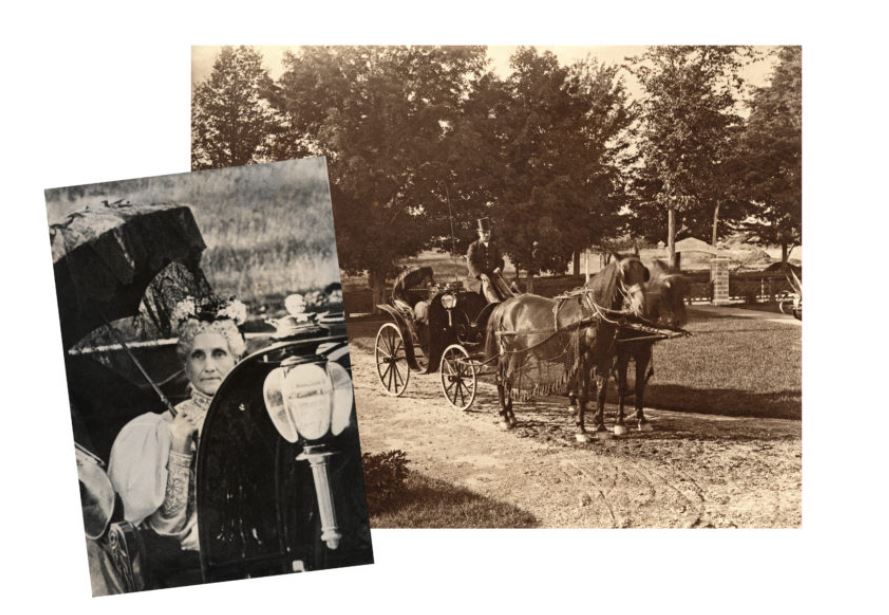
Newspapers far and wide covered the new church’s Dedication Day services.
“The late convention of Christian Scientists must bring home to every candid mind the truth that the Christian Science movement is one of the most remarkable phenomena of the age,” reported a small-town paper in Maine.35 “No matter what one may believe about Christian Science,” wrote the Lawrence (Mass.) Telegram, “no person of intelligence can fail to realize that this woman is one of the most remarkable personages of the twentieth century. Any personality which can command such a following as Mrs. Eddy has gathered under the banner of Christian Science, is certainly in a marked degree extraordinary.”36
Over the next few years, Mrs. Eddy would continue to bestow gifts upon the city of Concord, donating hundreds of thousands of dollars to Concord’s municipal buildings and institutions. She would give to charities, help fund the paving of roads, and support local manufacturers and businesses.37 And her benevolence extended far beyond her adopted hometown.
“When any calamity came upon any part of the country, she has ever been the first to make liberal contribution,” noted the Concord Daily Patriot in 1908. “Not only has Mrs. Eddy been generous and humane in a public way, but she has been charitable in the most personal and private way, for she has given, and given when and where no one knew,—given whenever and wherever she was satisfied and convinced that by giving she would relieve suffering, advance the interests of a worthy cause, promote a worthy effort, or stimulate one with a proper ambition to struggle on.”38
Click here to learn about current preservation efforts at First Church of Christ, Scientist, in Concord, New Hampshire, which welcomes continued support.
This is part three of a three-part series. The first article focused on the 1899 Old Home Week, and the second article looked more closely at Christian Science Hall.


















